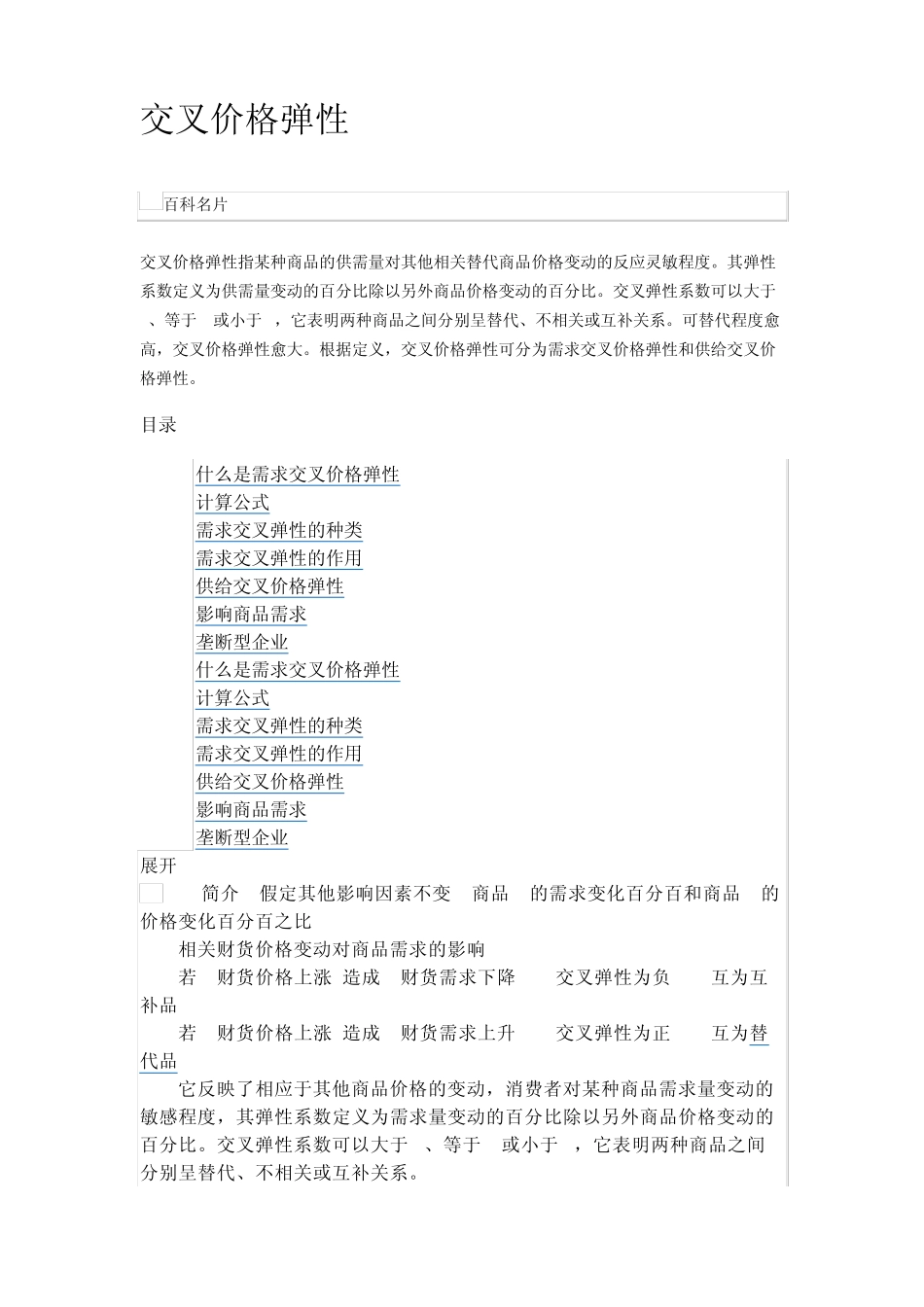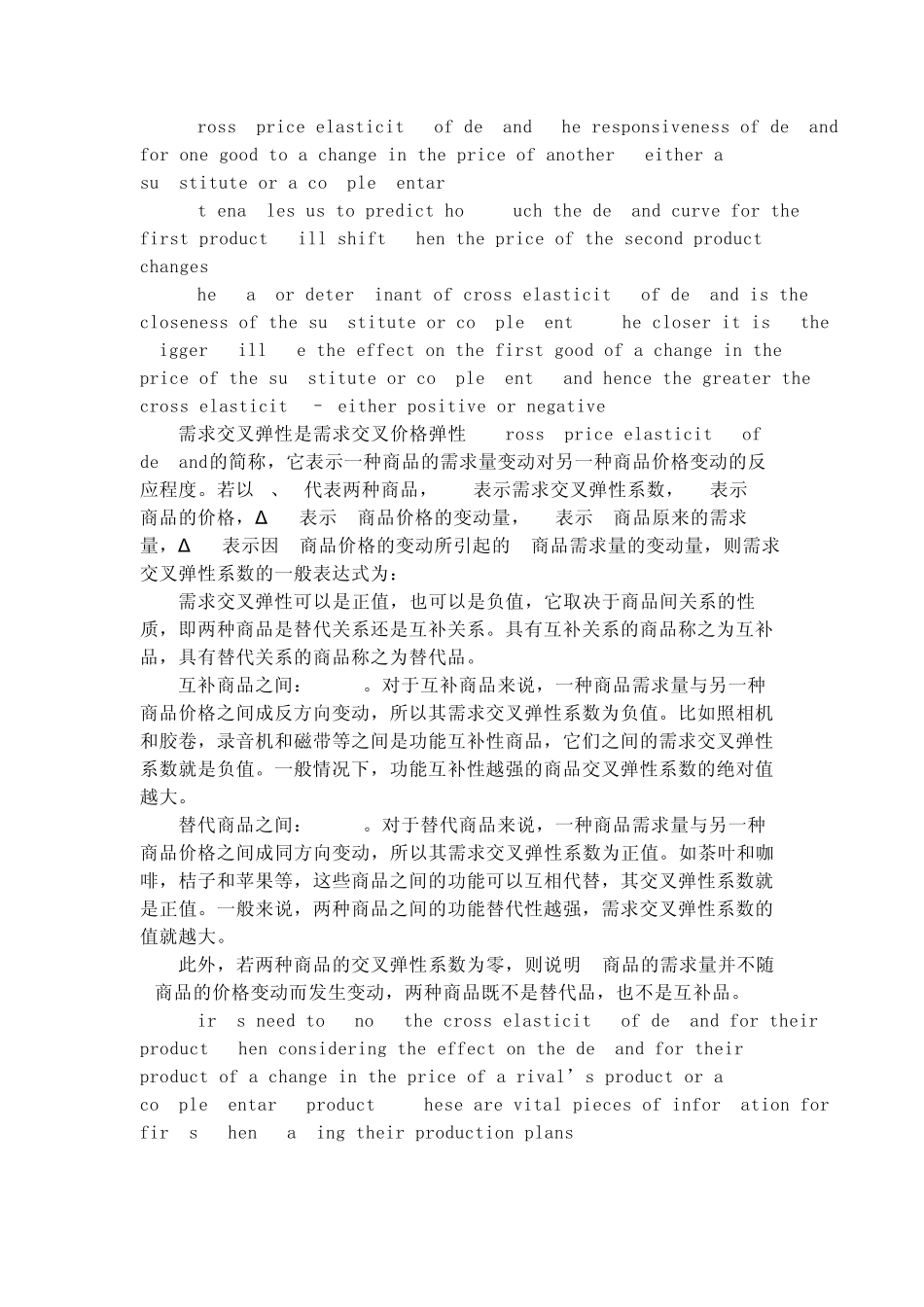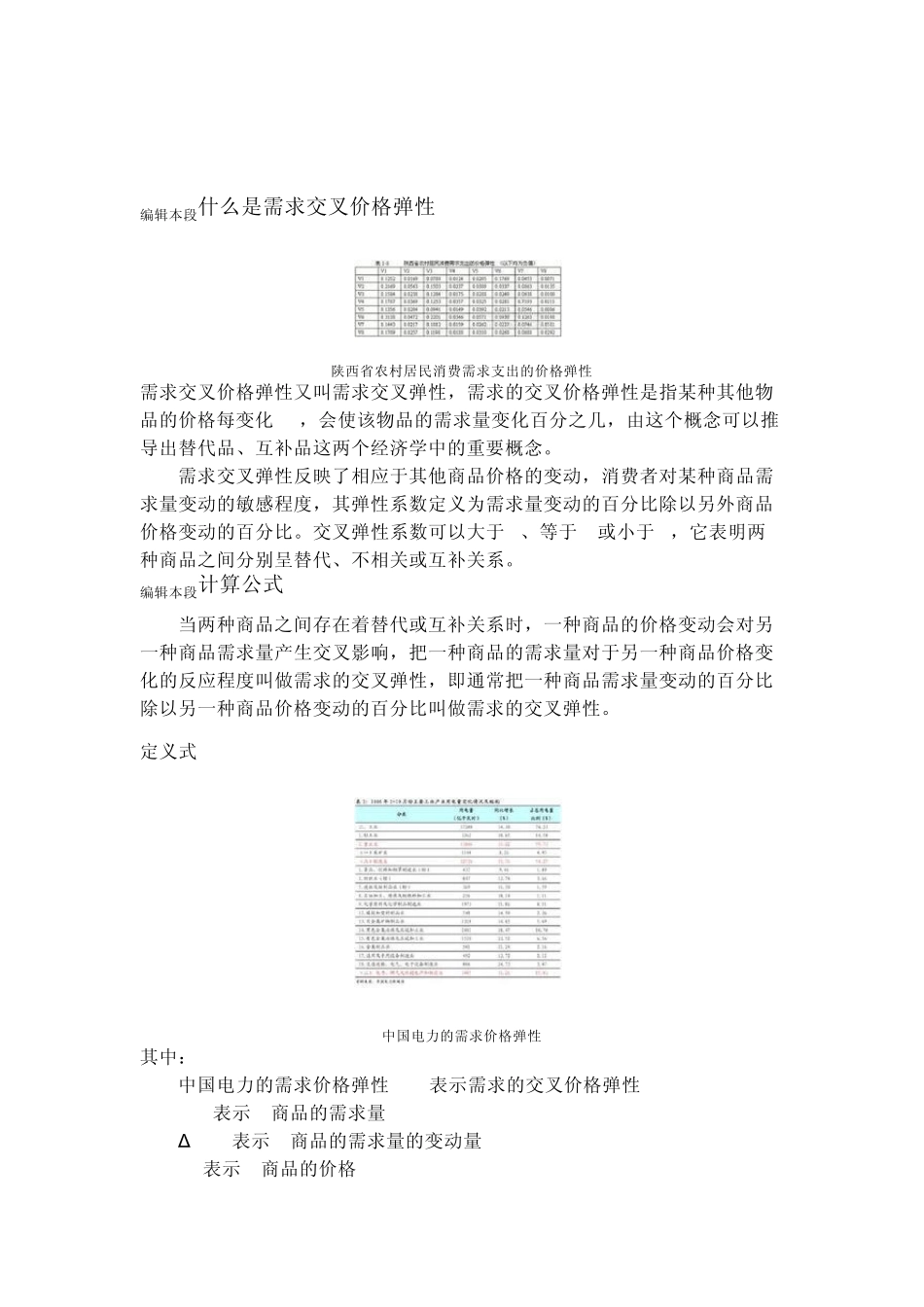交叉价格弹性 百科名片 交叉价格弹性指某种商品的供需量对其他相关替代商品价格变动的反应灵敏程度。其弹性系数定义为供需量变动的百分比除以另外商品价格变动的百分比。交叉弹性系数可以大于0、等于0或小于0,它表明两种商品之间分别呈替代、不相关或互补关系。可替代程度愈高,交叉价格弹性愈大。根据定义,交叉价格弹性可分为需求交叉价格弹性和供给交叉价格弹性。 目录 什么是需求交叉价格弹性 计算公式 需求交叉弹性的种类 需求交叉弹性的作用 供给交叉价格弹性 影响商品需求 垄断型企业 什么是需求交叉价格弹性 计算公式 需求交叉弹性的种类 需求交叉弹性的作用 供给交叉价格弹性 影响商品需求 垄断型企业 展开 简介 假定其他影响因素不变, 商品A的需求变化百分百和商品B的价格变化百分百之比. 相关财货价格变动对商品需求的影响 若 a财货价格上涨 造成 b财货需求下降--->交叉弹性为负--->互为互补品 若 a财货价格上涨 造成 b财货需求上升--->交叉弹性为正--->互为替代品 它反映了相应于其他商品价格的变动,消费者对某种商品需求量变动的敏感程度,其弹性系数定义为需求量变动的百分比除以另外商品价格变动的百分比。交叉弹性系数可以大于0、等于0或小于0,它表明两种商品之间分别呈替代、不相关或互补关系。 Cross-price elasticity of demand The responsiveness of demand for one good to a change in the price of another (either a substitute or a complementary). It enables us to predict how much the demand curve for the first product will shift when the price of the second product changes. The major determinant of cross elasticity of demand is the closeness of the substitute or complement. The closer it is, the bigger will be the effect on the first good of a change in the price of the substitute or complement, and hence the greater the cross elasticity – either positive or negative. 需求交叉弹性是需求交叉价格弹性(Cross-price elasticity of demand)的简称,它表示一种商品的需求量变动对另一种商品价格变动的反应程度。若以 X、Y代表两种商品,Exy表示需求交叉弹性系数,Py表示 Y商品的价格,Δ Py表示 Y商品价格的变动量,Qx表示...


